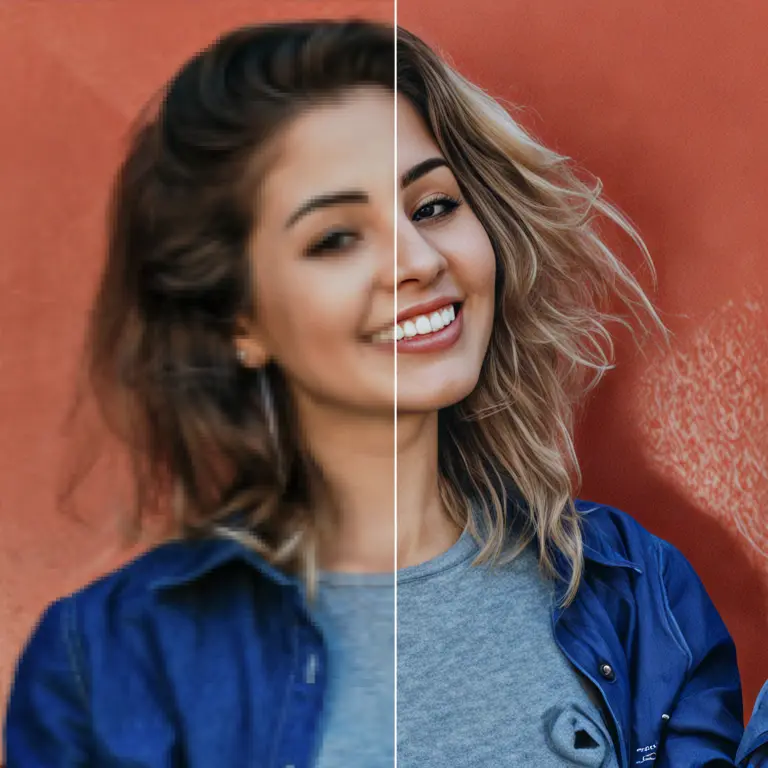ComfyUI Node: Create CameraCtrl Poses (Adv.) 🎭🅐🅓②
ADE_CameraPoseAdvanced
CategoryAnimate Diff 🎭🅐🅓/② Gen2 nodes ②/CameraCtrl/poses
Kosinkadink (Account age: 4001days) Extension
AnimateDiff Evolved Latest Updated
2025-03-13 Github Stars
3.08K
How to Install AnimateDiff Evolved
Install this extension via the ComfyUI Manager by searching for AnimateDiff Evolved- 1. Click the Manager button in the main menu
- 2. Select Custom Nodes Manager button
- 3. Enter AnimateDiff Evolved in the search bar
Visit ComfyUI Online for ready-to-use ComfyUI environment
- Free trial available
- 16GB VRAM to 80GB VRAM GPU machines
- 400+ preloaded models/nodes
- Freedom to upload custom models/nodes
- 200+ ready-to-run workflows
- 100% private workspace with up to 200GB storage
- Dedicated Support
Create CameraCtrl Poses (Adv.) 🎭🅐🅓② Description
Create complex camera movements with combined motions for advanced animation and visual effects.
Create CameraCtrl Poses (Adv.) 🎭🅐🅓②:
The ADE_CameraPoseAdvanced node is designed to create advanced camera control poses for use in animation and visual effects. This node allows you to combine multiple types of camera motions, each with its own strength, to generate complex and dynamic camera movements. By leveraging this node, you can achieve sophisticated camera animations that enhance the visual storytelling of your projects. The node is particularly useful for AI artists looking to add intricate camera dynamics to their animations without needing to manually keyframe each movement. It simplifies the process of creating smooth and professional-looking camera transitions, making it an essential tool for advanced animation workflows.
Create CameraCtrl Poses (Adv.) 🎭🅐🅓② Input Parameters:
motion_type1
This parameter specifies the first type of camera motion to be applied. It determines the initial movement pattern of the camera, such as panning, tilting, or zooming. The available options are predefined motion types that can be selected based on the desired effect.
motion_type2
This parameter specifies the second type of camera motion to be applied. It allows you to layer another movement pattern on top of the first, enabling more complex animations. The available options are similar to those for motion_type1.
motion_type3
This parameter specifies the third type of camera motion to be applied. Adding a third motion type can further enhance the complexity and fluidity of the camera movement. The available options are similar to those for motion_type1.
motion_type4
This parameter specifies the fourth type of camera motion to be applied. It provides additional layering for even more intricate camera animations. The available options are similar to those for motion_type1.
motion_type5
This parameter specifies the fifth type of camera motion to be applied. It allows for further customization and complexity in the camera movement. The available options are similar to those for motion_type1.
motion_type6
This parameter specifies the sixth type of camera motion to be applied. It offers the highest level of customization by allowing up to six different motion types to be combined. The available options are similar to those for motion_type1.
speed
This parameter controls the speed of the camera movement. It is a float value that can range from -100.0 to 100.0, with a default value of 1.0. Adjusting the speed can make the camera movement faster or slower, depending on the desired effect.
frame_length
This parameter specifies the length of the animation in frames. It is an integer value with a default of 16. The frame length determines how long the camera movement will last, allowing you to synchronize it with other elements in your animation.
prev_poses
This optional parameter allows you to input a list of previous camera poses. If provided, the new camera poses will be combined with these previous poses to create a seamless transition. This is useful for creating continuous camera movements across multiple segments of your animation.
strength1
This parameter controls the strength of the first camera motion type. It is a float value with a default of 1.0. Adjusting the strength allows you to fine-tune the impact of each motion type on the overall camera movement.
strength2
This parameter controls the strength of the second camera motion type. It is a float value with a default of 1.0. Similar to strength1, it allows for fine-tuning the impact of the second motion type.
strength3
This parameter controls the strength of the third camera motion type. It is a float value with a default of 1.0. Adjusting this parameter allows for further customization of the camera movement.
strength4
This parameter controls the strength of the fourth camera motion type. It is a float value with a default of 1.0. It provides additional control over the complexity of the camera animation.
strength5
This parameter controls the strength of the fifth camera motion type. It is a float value with a default of 1.0. Adjusting this parameter allows for even more intricate camera movements.
strength6
This parameter controls the strength of the sixth camera motion type. It is a float value with a default of 1.0. It offers the highest level of customization for the camera animation.
Create CameraCtrl Poses (Adv.) 🎭🅐🅓② Output Parameters:
CAMERACTRL_POSES
The output parameter is a list of camera control poses. These poses represent the combined and interpolated camera movements based on the input parameters. The output can be used directly in your animation workflow to achieve the desired camera dynamics. The poses are formatted in a way that is compatible with other nodes and tools in the Animate Diff ecosystem, ensuring seamless integration and application.
Create CameraCtrl Poses (Adv.) 🎭🅐🅓② Usage Tips:
- Experiment with different combinations of motion types and strengths to achieve unique and dynamic camera movements.
- Use the prev_poses parameter to create smooth transitions between different segments of your animation.
- Adjust the speed and frame_length parameters to synchronize the camera movement with other elements in your animation.
Create CameraCtrl Poses (Adv.) 🎭🅐🅓② Common Errors and Solutions:
"Invalid motion type selected"
- Explanation: This error occurs when an invalid or unsupported motion type is selected for one of the motion_type parameters.
- Solution: Ensure that you select a valid motion type from the predefined options available in the node.
"Speed value out of range"
- Explanation: This error occurs when the speed parameter is set to a value outside the allowed range of -100.0 to 100.0.
- Solution: Adjust the speed parameter to a value within the allowed range.
"Frame length must be a positive integer"
- Explanation: This error occurs when the frame_length parameter is set to a non-positive value.
- Solution: Ensure that the frame_length parameter is set to a positive integer value.
"Previous poses format invalid"
- Explanation: This error occurs when the prev_poses parameter is provided in an incorrect format.
- Solution: Ensure that the prev_poses parameter is a list of lists containing float values representing the previous camera poses.
Create CameraCtrl Poses (Adv.) 🎭🅐🅓② Related Nodes
- Description
- Create CameraCtrl Poses (Adv.) 🎭🅐🅓②:
- Create CameraCtrl Poses (Adv.) 🎭🅐🅓② Input Parameters:
- Create CameraCtrl Poses (Adv.) 🎭🅐🅓② Output Parameters:
- Create CameraCtrl Poses (Adv.) 🎭🅐🅓② Usage Tips:
- Create CameraCtrl Poses (Adv.) 🎭🅐🅓② Common Errors and Solutions:
- Related Nodes
RunComfy is the premier ComfyUI platform, offering ComfyUI online environment and services, along with ComfyUI workflows featuring stunning visuals. RunComfy also provides AI Models, enabling artists to harness the latest AI tools to create incredible art.


